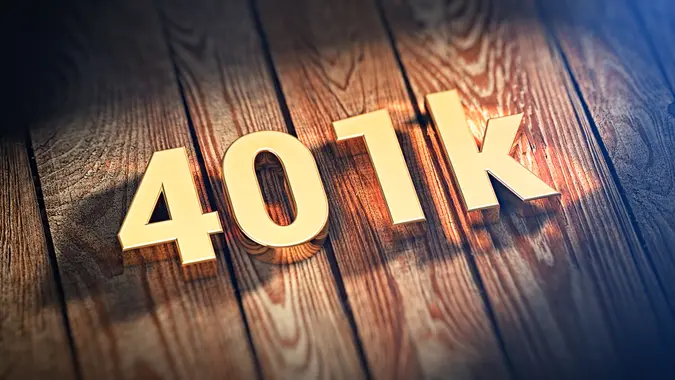Why Retiring at 67 May Not Be Realistic — and Why That Could Be a Good Thing

Commitment to Our Readers
GOBankingRates' editorial team is committed to bringing you unbiased reviews and information. We use data-driven methodologies to evaluate financial products and services - our reviews and ratings are not influenced by advertisers. You can read more about our editorial guidelines and our products and services review methodology.

20 Years
Helping You Live Richer

Reviewed
by Experts

Trusted by
Millions of Readers
The full retirement age for Social Security benefits is 67 for those born in 1960 or after — but that doesn’t mean every American will be able to retire comfortably by that age.
But retiring later than that might not be a bad thing. Read on for more details about the potential benefits of retiring later.
The State of Retirement
A full 64% of workers worry about running out of money in retirement, per a 2025 survey by HireClix. And worry they should. The Fed’s latest Survey of Consumer Finances found a median retirement savings of just $185,000 for pre-retirement workers aged 55-64. At a 4% withdrawal rate, that would generate a paltry $7,400 in annual retirement income.
Catherine Collinson, CEO of retirement research organization Transamerica Institute, added some historical context: “Baby Boomers were already mid-career when 401(k)s were introduced. When Gen X entered the workforce, 401(k)s were gaining traction but relatively few workers were offered one.”
According to a 2025 survey by F&G Annuities & Life, 70% of workers over 50 either plan to delay retirement or are considering it. But is that such a terrible thing? Many financial and aging experts make the case that later retirements aren’t the nightmare that workers fear.
Postpone Social Security
The later you start taking Social Security benefits, the greater the monthly paycheck.
Every year that you delay taking benefits after 67 adds another 8%. If you wait until 70, you’ll collect 32% more than you would have at 67. That’s a huge bump for just waiting a few extra years.
Shrink the Withdrawal Timeline
The earlier you retire, the longer you need your retirement savings to last you — and the less you can pull out every year.
If you want your nest egg to last for 30 years of retirement, Charles Schwab recommends withdrawing no more than 3.8% of it each year. That comes to just $19,000 a year for a $500,000 nest egg.
But if you need your portfolio to last you only 20 years, you can withdraw 5.4% ($27,000 a year for the same nest egg). And if you just need it to last 10 years, you can withdraw 10.3% ($51,500).
Phased Retirement Reduces Risk
The greatest risk to your retirement portfolio is a market crash in the first few years of your retirement. It’s called sequence of returns risk — that an early crash does more damage than the same crash later in your retirement.
You can reduce that risk by continuing to earn money, even if it’s not much. “More people are choosing flexible or phased retirements, working part-time, consulting, or pursuing meaningful projects that still bring in income,” said Peter de Silva, CEO of IRALOGIX.
If the stock market crashes, you can pause withdrawals and lean more heavily on your active income to wait out the correction.
Remaining Engaged
For many workers, their job doesn’t just provide a paycheck. It provides them with meaningful work, social interaction, challenge and engagement.
In fact, the HireClix study found that 41% of workers worry about being bored or unfulfilled in retirement. “The notion that workers want to just flip a switch from working full time to doing nothing is an antiquated concept that needs modernizing. For many, staying professionally engaged, even in a reduced or flexible capacity, helps combat isolation and reinforces a sense of identity,” said Neil Costa, CEO of HireClix.
 Written by
Written by  Edited by
Edited by 

























